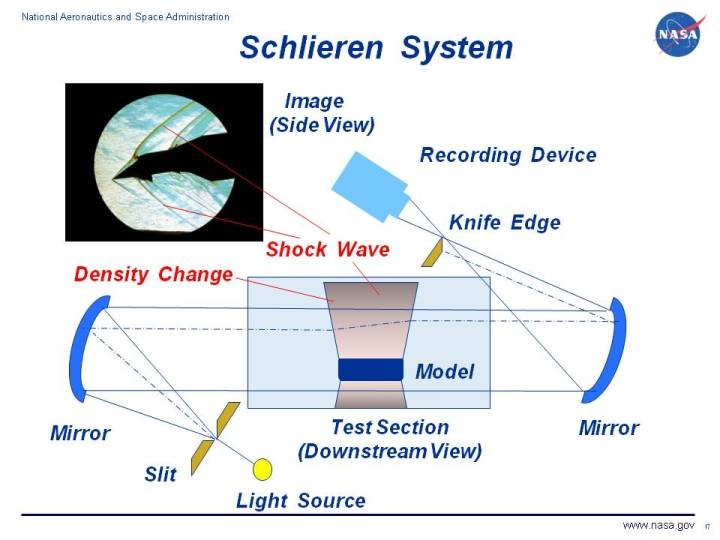@Saiboogu's answer is of course correct, this looks to be classic Schlieren photography.
It is notable that NASA has also developed two methods to generate faux-Schlieren images or "synthetic Schlieren" images without the need of special optical systems and collimated beams of light inside wind tunnels.
These techniques can be applied to real high speed aircraft or spacecraft moving in the Earth's atmosphere. Instead of generating light/dark bands from refraction of the collimated, uniform-intensity beam directly, they instead image a finely textured background as the craft passes in front of it. By using "optical flow" or other techniques they map small displacements of the texture due to the refraction, and plot the deflection map as intensity. The result can in some cases be better than traditional Schlieren imaging because they can reconstruct the vector direction of the displacement; the air density gradient.
NASA pioneered the use of the Sun, filtered through a narrow line filter (hydrogen-alpha or calcium-K) to produce the textured background. This could then be imaged from the ground by the craft passing between the ground cameras and the Sun.
Recently however they have also published results using a textured ground pattern in the desert, with a down-looking camera viewing from an aircraft above the craft to be measured.
Ground texture as background
From this answer:
Thanks to @Federico for finding and linking to this video!


Since they are measuring a two-dimensional displacement field, in a similar way to an optical flow measurement, they get a vector field rather than an intensity field for traditional schlieren imaging. That means they can play with the gradient in new ways.

Left: Schlieren image dramatically displays the shock wave of a supersonic jet flying over the Mojave Desert. Averaging multiple frames produce a low-noise picture of the shock waves. Right: Horizontal gradient reveals tip vortices from the same image set.
Solar texture as background
From this answer:

Updated camera testing on the ground, screenshot from NASA Supersonic Flights Validate Flightworthiness for Future Schlieren Imaging







